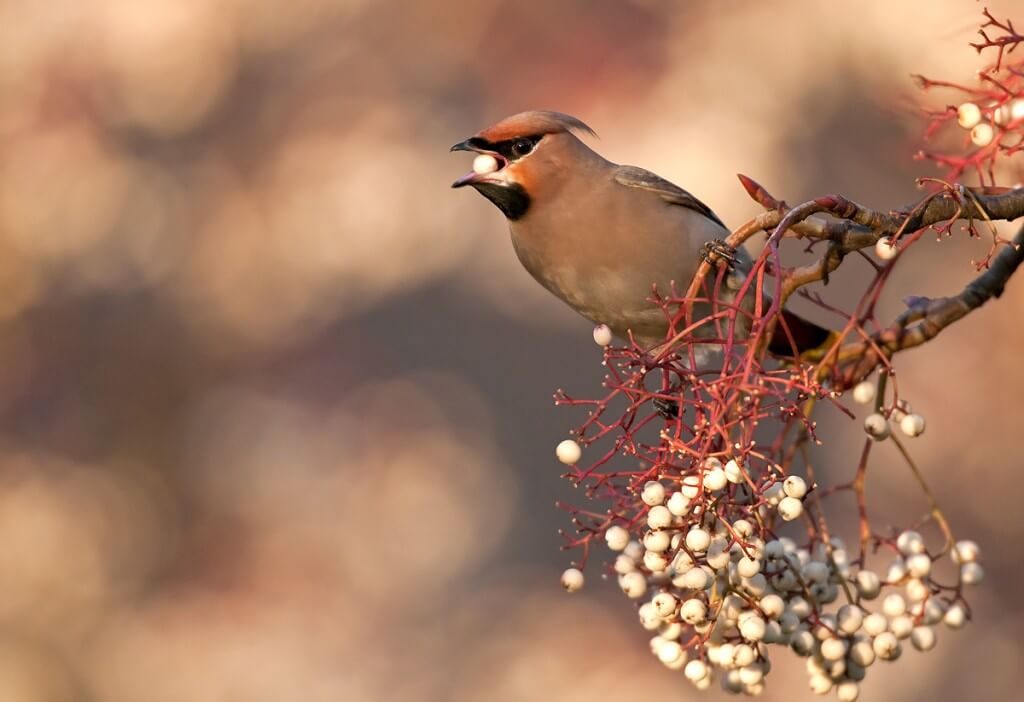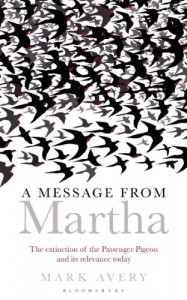
It doesn’t appear that this winter will be a Waxwing winter. If it is going to be one of those years when Tesco car parks are flooded with Rowan-eating visitors from Scandinavia then large numbers have usually been seen on the east coast and Fair Isle by now. But you can keep track of sightings by following @WaxwingsUK.
Last winter (2014/15) wasn’t a Waxwing winter, and nor was 2013/14.
So that’s three years in a row, it seems, when Waxwings have been thin on the ground, and few in Tesco car parks.
The winter of 2012/13 was quite a good year, but 2011/12 was pretty quiet.
But 2010/11 was an excellent year. I even saw a flock of 14 at Cheltenham racecourse on 1 January 2011, after seeing over a 100 in Northampton the day before.
That’s what Waxwings are like. Some winters they are rare, but every now and again they are numerous. The trigger for a large influx appears to be food conditions in Scandinavia where they breed: no food in Norway means a trip to Tesco (other supermarket car parks with Rowans are available – but Tesco is a good bet).
Waxwings are a ‘here today and gone tomorrow’ type of bird. They are also a ‘here this winter and then not around for several winters’ type of bird. Sitting here, in east Northants, I can’t tell you when the Waxwings will come back – but they will, sometime, in a while. And it will be good when they do, because they are gorgeous birds – welcome visitors, probably made all the more welcome by their unpredictability.
Waxwings are rather extreme, but they illustrate one of the things that I believe attracts so many of us to nature – it’s unbiddable nature. We are not in charge. When I go out for a walk I cannot control what I see. I can look hard and hope that I see lots of nice things, but that’s as far as it goes. I cannot, however rich or powerful I am, command a Waxwing to appear. I can just go out and look for them.
And that makes it fun. We are often surprised by nature – we see the unexpected or the wonderful. Waxwings have unbiddableness built into their ecology, but it’s there in all species. On any day you could be surprised by the commonest species if you see more of them, or fewer than usual, or see them very close, or see them do something they’ve never shown you before, or perhaps make a sound that you’ve never heard before. Unbiddableness.
 The most predictable of species nowadays is the Passenger Pigeon – it’s extinct. I know I won’t see one wherever I travel. Although, I did see a Passenger Pigeon egg in Northampton last week.
The most predictable of species nowadays is the Passenger Pigeon – it’s extinct. I know I won’t see one wherever I travel. Although, I did see a Passenger Pigeon egg in Northampton last week.
But when they were still numerous, say 150 years ago, Passenger Pigeons came and went like super-Waxwings. because, like Waxwings, they depended on tree seeds for their food, and these are unpredictable, Passenger Pigeons roamed the deciduous forests of the USA searching for the forests where their food was abundant – and those places moved around each year on a large scale depending on weather.
I was reminded of this a couple of times recently after giving talks about Passenger Pigeons. And this quote, which heads up Chapter 5 in A Message from Martha came to mind:
Ohio State Senate, select committee, 1857: The Passenger Pigeon needs no protection. Wonderfully prolific, having the vast forests of the North as its breeding grounds, traveling hundreds of miles in search of food, it is here today and elsewhere tomorrow, and no ordinary destruction can lessen them, or be missed from the myriads that are yearly produced.
that was written less than 50 years before the passenger Pigeon was extinct in the wild – they got that a bit wrong didn’t they?
If the Waxwings stopped coming, it would take us a while to realise – certainly here in east Northants where they rarely penetrate anyway. I’d be thinking that it was while since I last saw them, but would assume that they were somewhere else.
The Waxwings will be back. The Passenger Pigeon won’t be back.
[registration_form]
The unbiddableness of nature. That is the great divide for us humans. It often appears that there are two fundamentally different types of people; those who, like some of us (increasingly rare) love wildness, the unexpected, the out of control, the anarchic. Unfortunately in the modern world we are up against the exploding numbers of people who are desperately afraid of not being in control, not having everything arranged to be as easy and comfortable for them as they now have come to believe they are entitled to expect.
The results are plain to see all around us, as nature is forced to make way for roads, car parks, housing, factories, offices and the rest of the nonsense. For the modern control freaks even the bits that haven’t been concreted / asphalted are made subject to control with chemicals and machinery – simply look at so many of the gardens, allotments, or open spaces today; anything wild is sprayed, dug or chopped away, castigated as being “untidy”!
So true. It’s not just the case that wildlife sites are given short thrift when any development someone can make a buck or two out of rears its head, it’s the masses of land, the odd corners, the bits between units on industrial estates, the surrounds of car parks and the vast expanses of municipal parks that are nothing but sterile, close mown grass for no other reason than being close mown grass. I make a conscious effort not to call this being tidy, as that might endorse calling un mown vegetation untidy. It’s nature, and no more untidy than clouds, waves or mountains are.
We actually pay local authorities to reduce educational and recreational value of our neighbourhoods, I’ve never met a young child fascinated or inspired by a stretch of close cropped grass, but by god they love bug hunts. There have been excellent projects looking at rehabilitating old quarries and designing new Sustainable Urban Drainage Schemes (SUDS) to be brilliant for wildlife. But how many actually are? Most new SUDS in my area are mown to death, and we had a multi, multi million pound lottery funded project initially billed as an ‘Eco park’ that actually resulted in the clearance of wildlife habitat for ‘aesthetic’ reasons. The consultation period was a complete and utter sham. Yet again nature and its study was marginalised.
And as far as many old opencast coal mines are concerned it now seems they are more likely to become a theatre for artistic expression – shaped into concentric rings, pyramids, mazes sown with Italian rye grass – rather than new wildlife habitat. ‘Art’ and corporate sterility rule. I’m confident this can change, the arguments for more conservation are overwhelming, but the wildlife groups are going to have to get a hell of a lot more assertive than they have been. So often the failing of our sector.
So true. It’s not just the case that wildlife sites are given short thrift when any development someone can make a buck or two out of rears its head, it’s the masses of land, the odd corners, the bits between units on industrial estates, the surrounds of car parks and the vast expanses of municipal parks that are nothing but sterile, close mown grass for no other reason than being close mown grass. I make a conscious effort not to call this being tidy, as that might endorse calling un mown vegetation untidy. It’s nature, and no more untidy than clouds, waves or mountains are.
We actually pay local authorities to reduce educational and recreational value of our neighbourhoods, I’ve never met a young child fascinated or inspired by a stretch of close cropped grass, but by god they love bug hunts. There have been excellent projects looking at rehabilitating old quarries and designing new Sustainable Urban Drainage Schemes (SUDS) to be brilliant for wildlife. But how many actually are? Most new SUDS in my area are mown to death, and we had a multi, multi million pound lottery funded project initially billed as an ‘Eco park’ that actually resulted in the clearance of wildlife habitat for ‘aesthetic’ reasons. The consultation period was a complete and utter sham. Yet again nature and its study was marginalised.
And as far as many old opencast coal mines are concerned it now seems they are more likely to become a theatre for artistic expression – shaped into concentric rings, pyramids, mazes sown with Italian rye grass – rather than new wildlife habitat. ‘Art’ and corporate sterility rule. I’m confident this can change, the arguments for more conservation are overwhelming, but the wildlife groups are going to have to get a hell of a lot more assertive than they have been. So often the failing of our sector.
Since reading ‘Martha’ I’ve been thinking about the story. It seems that this is the first of the many accounts of the demise of the Passenger Pigeon to put forest loss clearly in the frame as opposed to the very obvious shooting story.
Going beyond that, as something at least rare, if not unique, I wonder whether PP weren’t actually a bird that may have shaped the ecology of the forests they occupied – its that reference to starving hogs that got me thinking. Ina European context big mast years are a boon for forest mammals – you can see the ‘hogs’ hovering up the mast in the New Forest literally today ! But using the same facility our migrant insectivores have, birds can use their mobility to swoop on a food source and the PP’s ability to arrive so rapidly and in vast numbers could, I’d suggest, have limited the populations of the sedentary mammals that play such an important role in many forests – which could well have a knock on effect because there might be less browsing of regeneration through the year, leading to a denser forest and possibly more mast for the Passenger Pigeons. In contrast, species like Waxwing are just part of the broader ecology of the Eurasian boreal forest.
Mark, you’re exactly right. We humans seem to have something in our DNA which commands us to control everything. The simple fact that nature cannot be controlled fascinates us, although it doesn’t stop us from trying. Hunters even use that very word in an attempt to legitimise their activities; they describe themeselves as ‘controlling foxes’, ‘controlling deer’ etc. it makes them sound so much more grown-up and responsible than the truth, which is that they have some sort of personality defect which mean they find killing something fun.
Although I’m interested in the whole of the natural world I’m primarily a birdwatcher, and I’ve always thought that if I could predict exactly what I’m going to find when I go out I probably wouldn’t bother. Its the unpredictability factor again.
Incidentally, should we find another word than ‘nature’ or ‘natural’ to describe the world we love? Its an easy shorthand to be sure, but I can’t think of anywhere in Britain that could fairly be described as ‘natural’. Nature is what happens when man doesn’t interfere, and our fingerprints are all over the scene wherever one looks. Nature is after all a process, and if I walk out onto my beloved South Downs or visit Minsmere, which I plan to do next weekend, I’m in an environment which is managed (ie controlled) to eliminate process and is kept in stasis. I love it, but its not nature, not natural.
I’m obviously thinking too much – need more coffee…